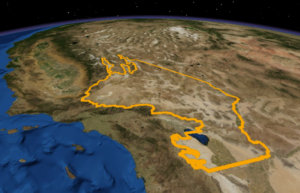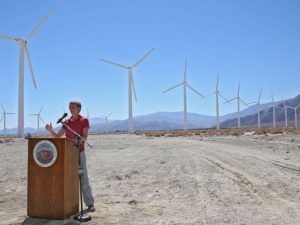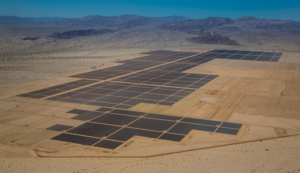Desert Renewable Energy Conservation Plan Approved By Federal and State Agencies
First Phase of Desert Renewable Energy Conservation Plan Approved By Federal and State Agencies
Last week, the U.S. Department of the Interior’s Bureau of Land Management and the California Energy Commission signed the first phase of the Desert Renewable Energy Conservation Plan (“Plan”), which approved revisions of a sprawling renewable energy and conservation plan for the California desert. The Plan covers 11 million acres of federal land and will encourage the development of renewable energy projects in the southern California desert. It specifically sets aside 600 square miles for energy development zones, focusing on wind, solar, and geothermal projects and also encourages conservation areas to protect habitat for species such as the bighorn sheep, desert tortoise and Mohave ground squirrel, preserves cultural resources, and supports outdoor recreation opportunities.
A previous draft of the Plan was rejected by environmentalists and the wind industry in September 2014. The environmentalists argued that the draft plan gave too much freedom to developers and was too focused on utility-scale projects. On the other hand, the wind industry argued that the Plan didn’t make enough suitable land available for development. In response, government officials decided to revise the plan beginning in 2015 and split the Plan into phases, with Phase 1 focusing on the BLM’s federal lands.
The California Energy Commission feels the Plan will provide a clear pathway for projects on federal lands while also giving California clarity about where renewable projects could be located. However, this final version of the Plan was quickly criticized by clean energy industry groups and environmentalists. Generally, they argue that most of the 388,000 acres set aside in the Plan’s designated areas aren’t actually suitable for projects. The California Energy Association specifically feels this Plan represents a broad-scale ban on wind-energy development. Meanwhile, the Center for Biological Diversity noted that while the revised Plan is an improvement from the draft, it still inadequately identifies proper conservation areas and doesn’t encourage project development on already-disturbed lands.
Phase 2 of the Plan is now moving forward and during this phase, counties will identify private lands that are considered “low conflict” and thus suitable for renewable energy development. Completion of Phase 2 of the Plan is expected to take several years.



